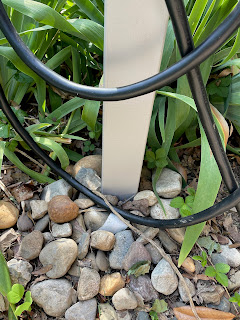We recently got an electric vehicle--good timing as gas prices climb. We could charge it from the outlet in our garage with the included charger cable, but only at a rate of something like a 1-2% every hour. Fortunately, we had planned for this. Years ago, when we converted the breezeway to our sunroom and created and ran electricity to the attic, D--knowing that one day he would convince me to get an EV--had our contractors run a 240V line from the circuit box to the garage. It wasn't connected to anything, but the electrician at the time confirmed we have enough room in the circuit box to eventually activate it.
Fast forward almost six years and we had our E vehicle. We had an electrician come out and connect everything. He was impressed by our prescient decision to have that wired run back in 2016, now that copper wiring has quadrupled in price. He tied the cable into the circuit box and to our wallbox charging management system, a friendly looking glowing box that now lives just inside our garage door.
Next, we hd to get the cable outside, since our garage is really more of a workshop and certainly not a place to park our car. We laid out a garage door strip, cut out a channel, and ran the cable along it.D created a cute little wooden guide with a copper bracket to keep the cable in place. The seal keeps the garage door about a half inch from the concrete floor and gives us exactly enough clearance for our cable.
Then D primed and painted a 4'' fence post to match the new pearl gray siding and topped with an adorable copper top. He also treated the bottom with something to protect it from the constant moisture of being buried in the ground.
For now at least, it's just sitting in probably a one-foot hole filled with gravel. This will apparently also help to keep the bottom from rotting by helping to drain rain water out into the dirt rather than sitting next to the post.














